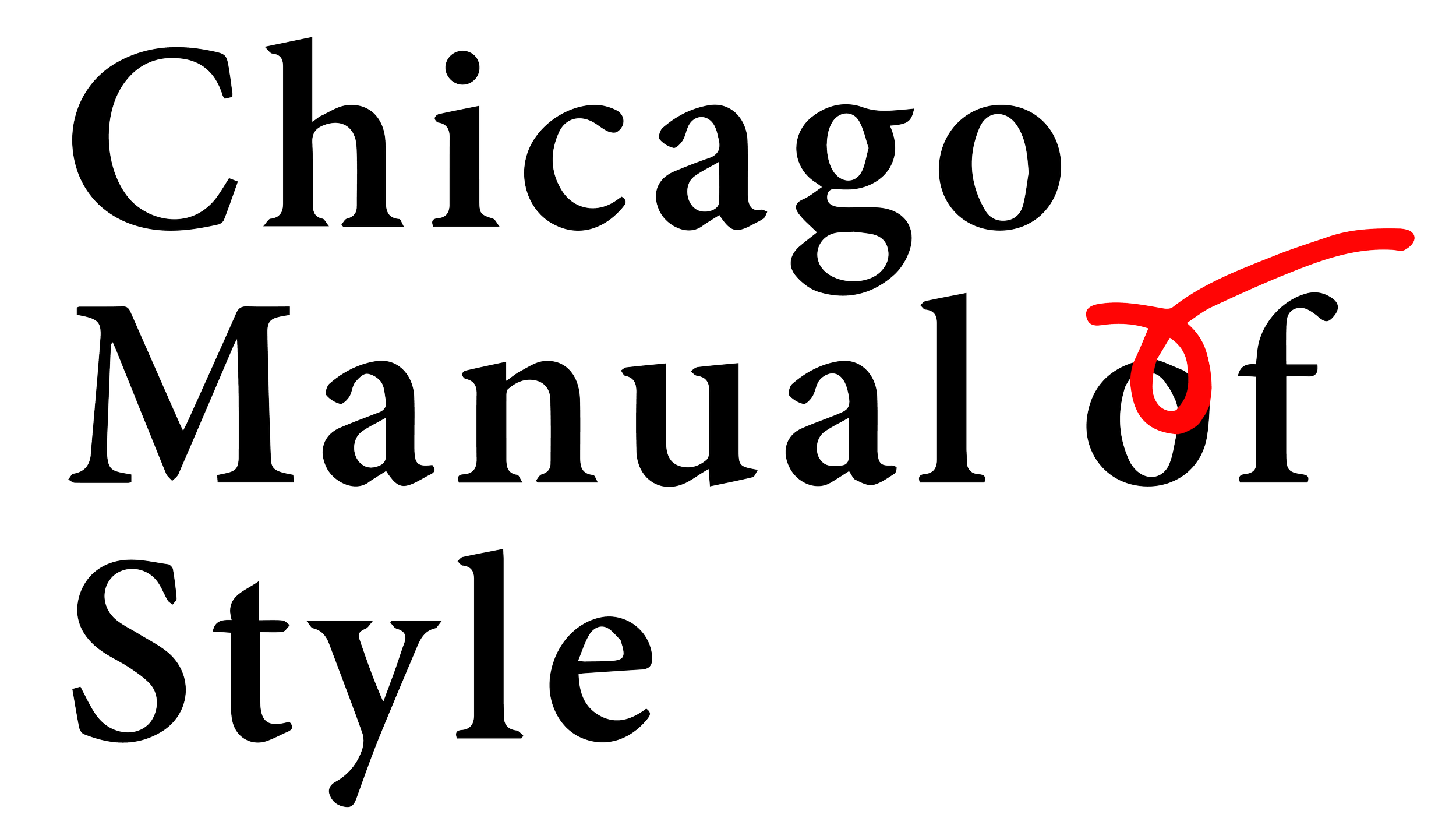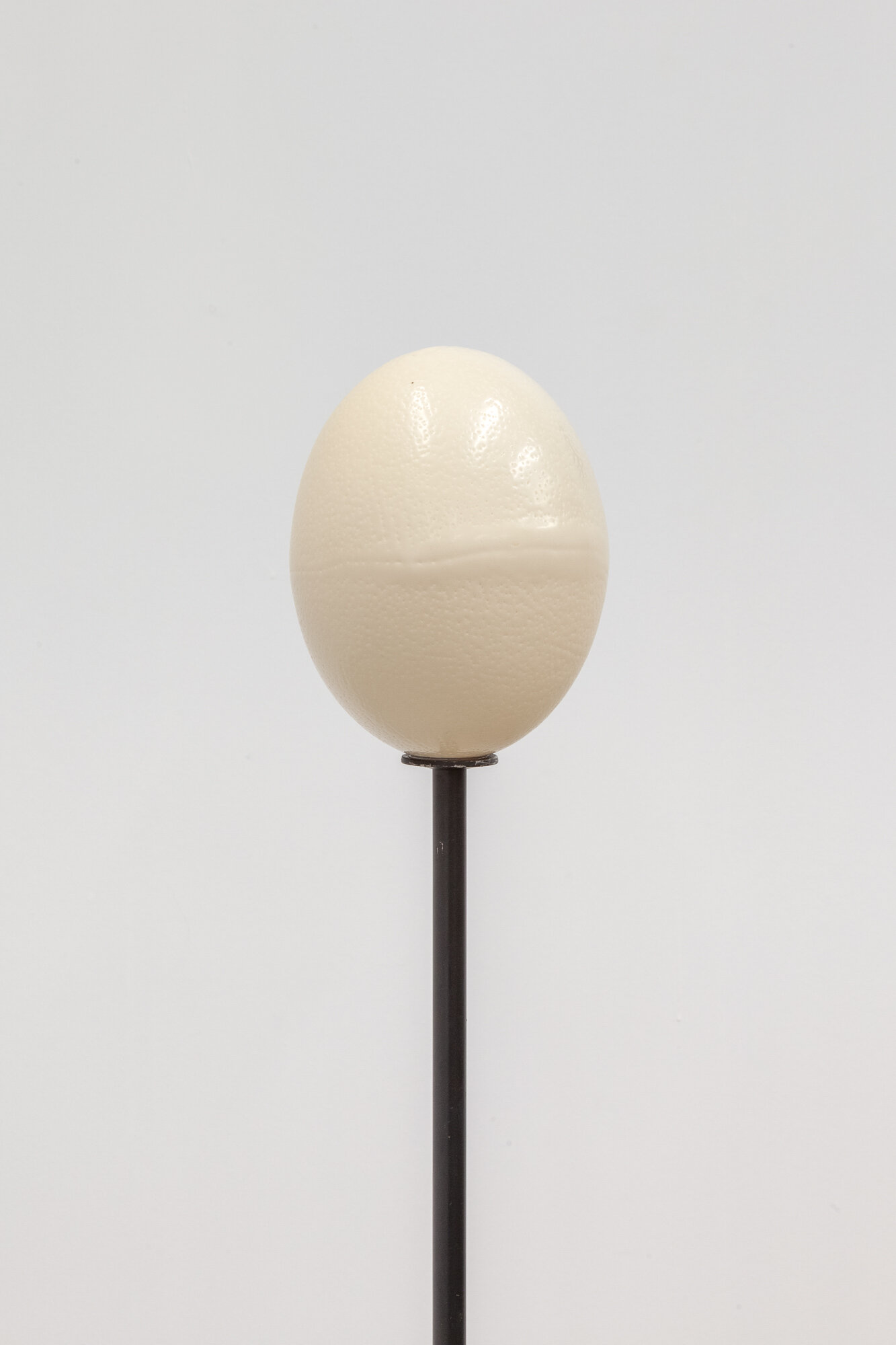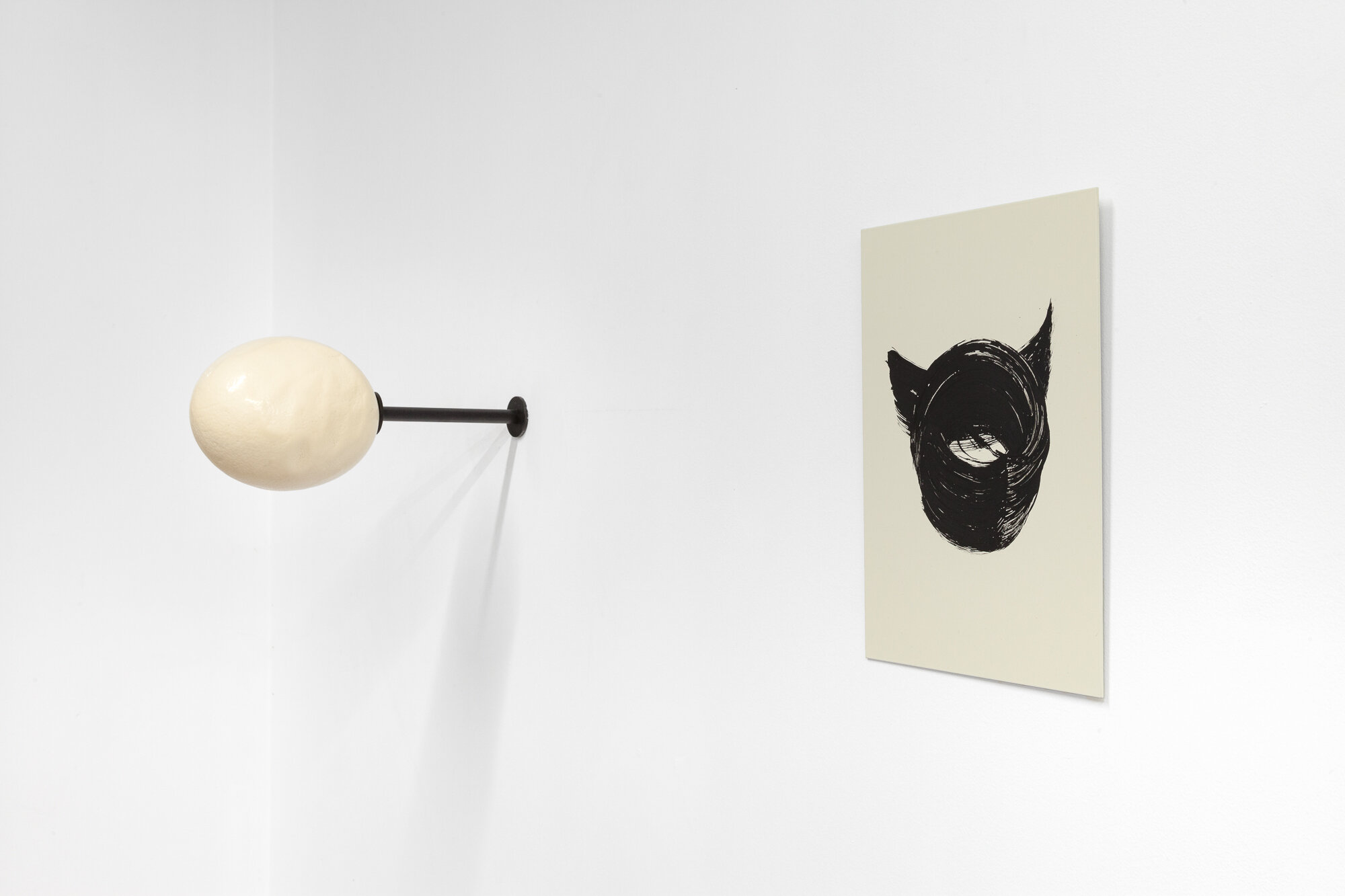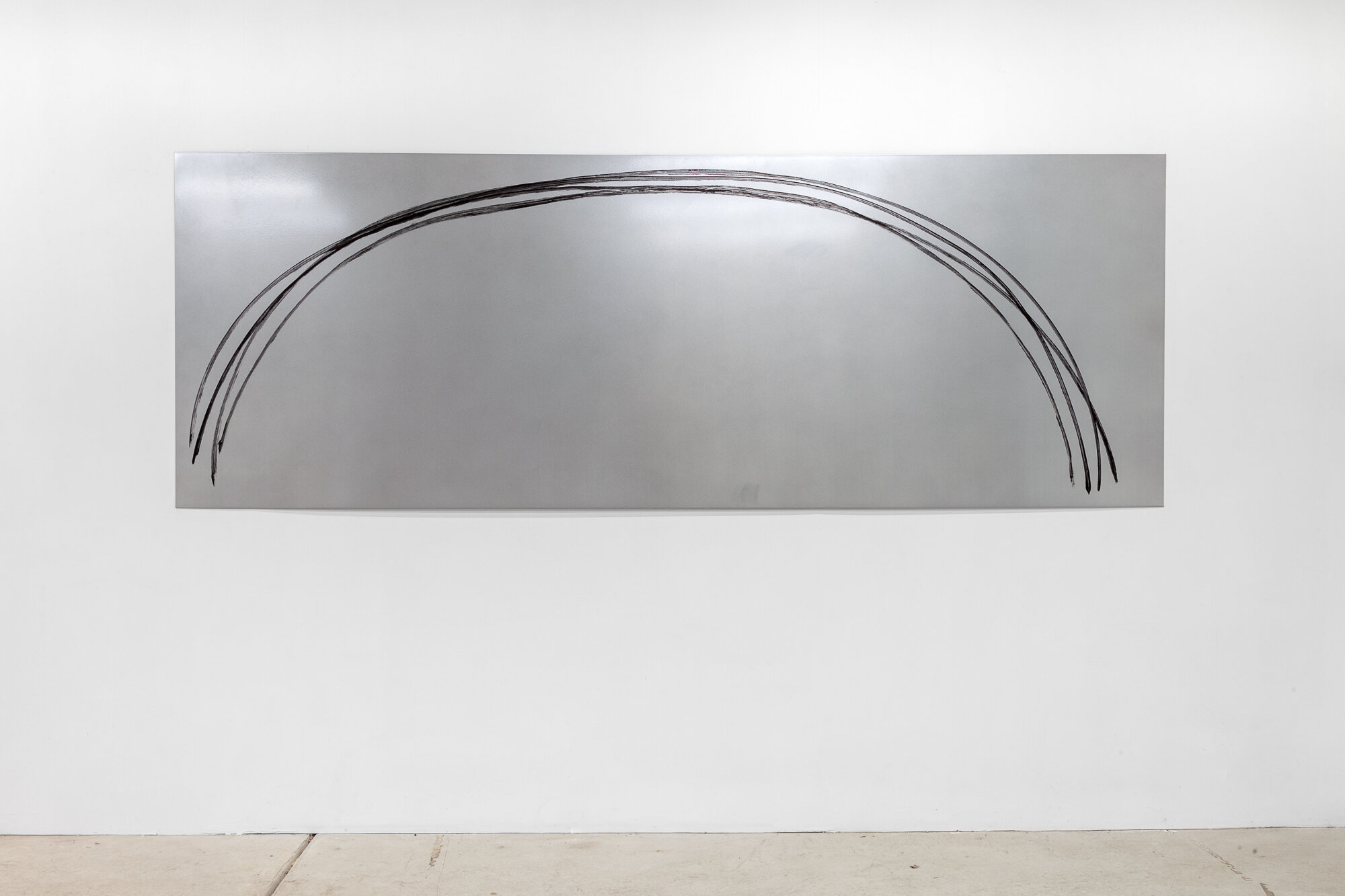Sarah Ortmeyer
INFERNO CHICAGO
Curated by Stephanie Cristello
September 20—November 17, 2019
Opening Reception
Friday, September 20, 6:00–9:00pm during EXPO CHICAGO as part of Art After Hours
Image: Sarah Ortmeyer, FLYRT, exhibition view, Kunstverein München (Munich, Germany). Copyright Sarah Ortmeyer. Photographer: Peter Mochi.
CHICAGO, IL—Chicago Manual Style is pleased to present the first solo exhibition of German artist Sarah Ortmeyer (b. 1980, Frankfurt am Main) in Chicago. The exhibition, entitled INFERNO CHICAGO, incorporates the formal elements of chess alongside a series of new paintings and sculptures. In this show, the personification of heaven and hell is also explored through the artist’s ‘emoji shadow series,’ a body of work that interrogates the relationship to the origins of painting, universal language, and iconography. In her paintings of palm trees, devils, and rainbows, Ortmeyer captures the essence of the codex as both a type of script and a physical object capable of existing in nature.
Support for this exhibition was provided by the Austrian Cultural Forum in New York and the Goethe Institut Chicago.
For inquiries: info@chicagomanual.style
––
Sarah Ortmeyer (b.1980) is a graduate of Städelschule, Staatliche Hochschule für Bildende Künste, Frankfurt. Selected shows include: Kunstverein München (Munich); Belvedere21 (Vienna); Museum of Modern Art (Warsaw); Palais de Tokyo (Paris); MAK Center (Los Angeles); KW Institute for Contemporary Art (Berlin); Wittgenstein House (Vienna); Stedelijk Museum Bureau (Amsterdam); Museum für Moderne Kunst (Frankfurt); MoMA PS1 (New York); Tel Aviv Museum (Tel Aviv), Monnaie de Paris (Paris), Hamburger Bahnhof (Berlin) and Swiss Institute (New York). Her work has been featured in Artforum, Frieze Magazine, Kunstforum International, THE SEEN, The New York Times, and The New Yorker, among others.
Essay: A Shadow Realm
In German, as in the Romance languages, the term for ‘sky’ is the same as ‘heaven.’ This linguistic sameness is one that unifies divine consequence with the natural world. Heaven is luminous, pure, bright. Conversely, hell is darkness—hues defined by shadows, the deep obscurity of abyss, a black monochrome.
This relationship can be related to chess; the surface area of the board is precisely divided between these two polarities. It is equally light as it is dark. Chess is a game in which the outcomes are limitless, infinite, and dramatized through a narrative of conquest. While chess is secular, it carries an inherently allegorical implication. When pieces fall, where do they go? Perhaps we could imagine pawns held in purgatory, rooks suspended in limbo, or Kings having descend into the depths.
fig. 2 Sarah Ortmeyer, PALMA, 2019. Courtesy of Dvir Gallery, Tel Aviv / Brussels.
In artist Sarah Ortmeyer’s (b. 1980, Frankfurt am Main, Germany) latest body of work, INFERNO, the personification of heaven and hell is explored through the artist’s affective relationship to the origin painting, alongside iconography, universal language, and chess. Central to the exhibition are large-scale paintings on metal from her GRANDMASTER series, previously shown at the Kunstverein Munich, in which images of skies (each a heaven) are obscured by a grid of black paint, representing the classic pattern of a chess board (fig. 1). The panels on view depict two different types of atmospheres; the larger work appears like a humid summer day, the sun fighting to break through an overcast screen of clouds—the small blue piece appears crisp and weightless. In terms of scale, the chess panels relate as equally to sculpture as they do painting, establishing the fundamental relationship between Ortmeyer’s often monochromatic practice and her raw use of figuration to signify modes of image-based conversation.
Also included within the exhibition are the artist’s latest ‘emoji shadow series,’ which includes brushwork paintings that capture the essence of the codex as both a type of script and a physical object capable of existing in nature (fig. 2). While the lines in each piece appears in vivacious, supple strokes, Ortmeyer’s choice in figuration—such as the representation of devils (DIABOLUS), tropical trees (PALMA), and rainbows (ARCUS)—is iconic and considered. Like in nature, each is rendered in a mode of representation that is entirely without replica—not as facsimiles, but genuine symbols with a repertoire of universal characters. In Ortmeyer’s two-dimensional paintings on paper and metal, alongside the sculptures, the serial nature of the works is often visually combined in the same way one would compose a text message or comment. A distinct type of writing.
Occupying the walls and floors of the space at various points, Ortmeyer’s sculptural works, entitled ROI and PION, utilize a series of malformed ostrich eggs—appearing wounded—left untouched in their natural hue. Each represents the function of a player within a game that is not played. Through the installation, the viewer is rewarded with the distance of calculating chess, though its presence is hyper-relevant. Time appears to stand still, as if placed within the incarnation of a match—a stalemate. The titling of the work alludes to the source of the exhibition—Dante’s Inferno—yet, it is more likely that Ortmeyer’s use of language points to something more permanent, more universal: Mondial. Latin is the root of all languages. As with the majority of Ortmeyer’s practice, which points to the roots of the objects and images that surround us, the works remain open for activation; the role of the performer is shared by the sculptures and viewers alike.
fig. 1 Sarah Ortmeyer, GRANDMASTER, 2019. Courtesy of Dvir Gallery, Tel Aviv / Brussels.
While none of the pieces on view enact specific lines from the original epic, one passage in particular helps to define the parameters of the show. Uttered by Virgil to his mortal companion in Canto XXVI, as they stare over eighth chasm, he speaks, “Within these ardors are the spirits, each / swathed in confining fire.” (fig. 3) We can read this as a statement of immersion—yet, the illumination that accompanies the page (an etching by French artist Gustave Doré that appeared in the 1866 manuscript of the publication) has much to do with the appeal of Inferno in relation to Ortmeyer’s work. In the print, the dominance of the shadow is emphatically staged. From the intensity of a flame in the lower left corner of the image, the illustration transforms the human figure into an elongated, all-encompassing silhouette.
The role of the shadow may very well be the protagonist in this exhibition of Ortmeyer’s practice. It is the shadow that is said to have ‘invented’ painting; its history is one that dates back to the Corinthians in Ancient Greece, where it is credited that the discovery of painting was made through projection.[1] In INFERNO, Ortmeyer’s use of black and white, alongside the ‘non-color’ of silver (a mirror, a reflection) through the backdrop of the metal and iridescent paper works, is most accurately viewed through the dual-lens of contemporary technology alongside the history of painting itself. While the tale of painting is told through a projection, it is useful to consider a more eternal and unwavering light: that of the sun.
What is more universal than a shadow?
The shadow of bodies. The shadow of language. The shadow of images. Unlike in the Romance languages, the German word for hell does not relate to fire. Rather, it defines a more secreted space, a ‘nether world’ or ‘concealed place.’ A shadow realm.
—Stephanie Cristello
fig. 3 Gustave Doré, illustration for Canto XXVI, Dante’s Inferno (1866).
[1] This origin story tells the tale of a daughter, “who, being deeply in love with a young man about to depart on a long journey, traced the profile of his face, as thrown upon the wall by the light of the lamp [umbram ex facie eius ad lucernam in pariete lineis circumscripsit].” Secundus, Gaius Plinius. Pliny the Elder: Natural History. 1961.



























